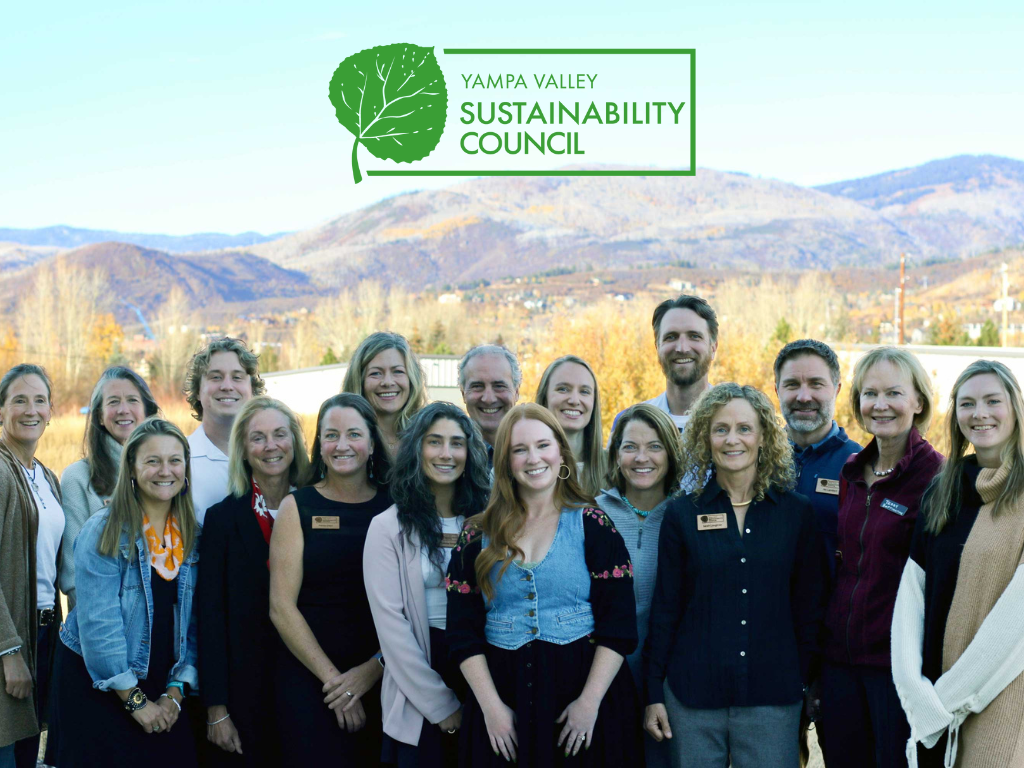MAY 23, 2017 BY
Adapted from the Steamboat Today
Written by Suzie Romig, YVSC Energy Outreach Coordinator
Steamboat Springs — The late spring snow storm may make for a muddy May, but local water resources officials said community water conservation will still be important during this predicted warmer and dry summer.
Below average precipitation from mid-February through March and an 80 percent of average snowpack level at the Buffalo Pass SNOTEL monitoring station on April 1, coupled with National Oceanic and Atmospheric Administration predictions for a warmer summer, are indicators for necessary water conservation, said Frank Alfone, general manager for Mount Werner Water District.
Alfone and other local water educators encourage citizen attendance at Tuesday evening’s educational event, “Residential Water Efficiency: Not a Drop to Waste,” from 5:30 to 7 p.m. at the Steamboat Springs Community Center. The event is Yampa Valley Sustainability Council’s Talking Green for May with co-sponsors the city of Steamboat Springs and Community Agriculture Alliance.
Kelly Romero-Heaney, city water resources manager, said many water users forget that the more indoor water that runs through a home, school, hotel or business means more wastewater the city plant must process. Significant wastewater plant outflow, when the Yampa River is low and the river water temperature is high in August, can lead to increased state regulations on the wastewater plant effluent, she explained.
“Less river water for dilution for wastewater discharge leads to stricter state standards on the quality of the discharge,” Romero-Heaney said. “Treating the water is expensive and requires resources from electricity to chemicals to man power.”
Gilbert Anderson, city wastewater supervisor, said electricity costs alone to run Steamboat’s one regional wastewater plant is $225,000 per year, and peak wastewater consumer use averages 2.7 million gallons per day.
Consumers use energy for warming water at home, and producing and distributing potable water to the community is an energy intensive process as well, Alfone said. In 2016, the district paid 2.5 times more in electricity costs to produce water during the peak summer month of August compared to peak winter water use in January.
The district must bring online a secondary water treatment plant on the south end of town to meet water irrigation demand mid-June through early September. Alfone said summer peak use for the district is 6 million gallons a day, three times more than winter peak use.
Local water officials said many water users do not understand that irregular rain and snowfall is temporary and not as important to community water supplies as high elevation snowpack levels that are key for water storage and maintaining a healthy river flow during the summer. The timing of the peak spring runoff is also important.
“When we have an early runoff, as we have this year, it generally means we are going to have less water available during the peak water use season in later summer,” Romero-Heaney said.
At Tuesday’s Talking Green, guest speaker Kevin Reidy, State of Colorado water conservation technical specialist, will discuss both the big picture of the water supply-demand gap in Colorado as well as individual actions residents can take in their daily lives to conserve water.
The event opens at 5:30 p.m. with water information tables from Mount Werner Water, Yampatika, Gecko Landscape, CSU Master Gardeners, Community Agricultural Alliance and YVSC. The tables will open again for questions after Reidy’s presentation.






